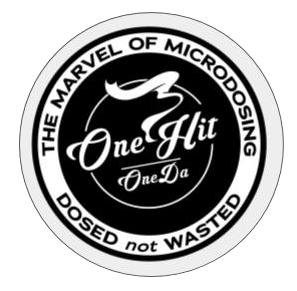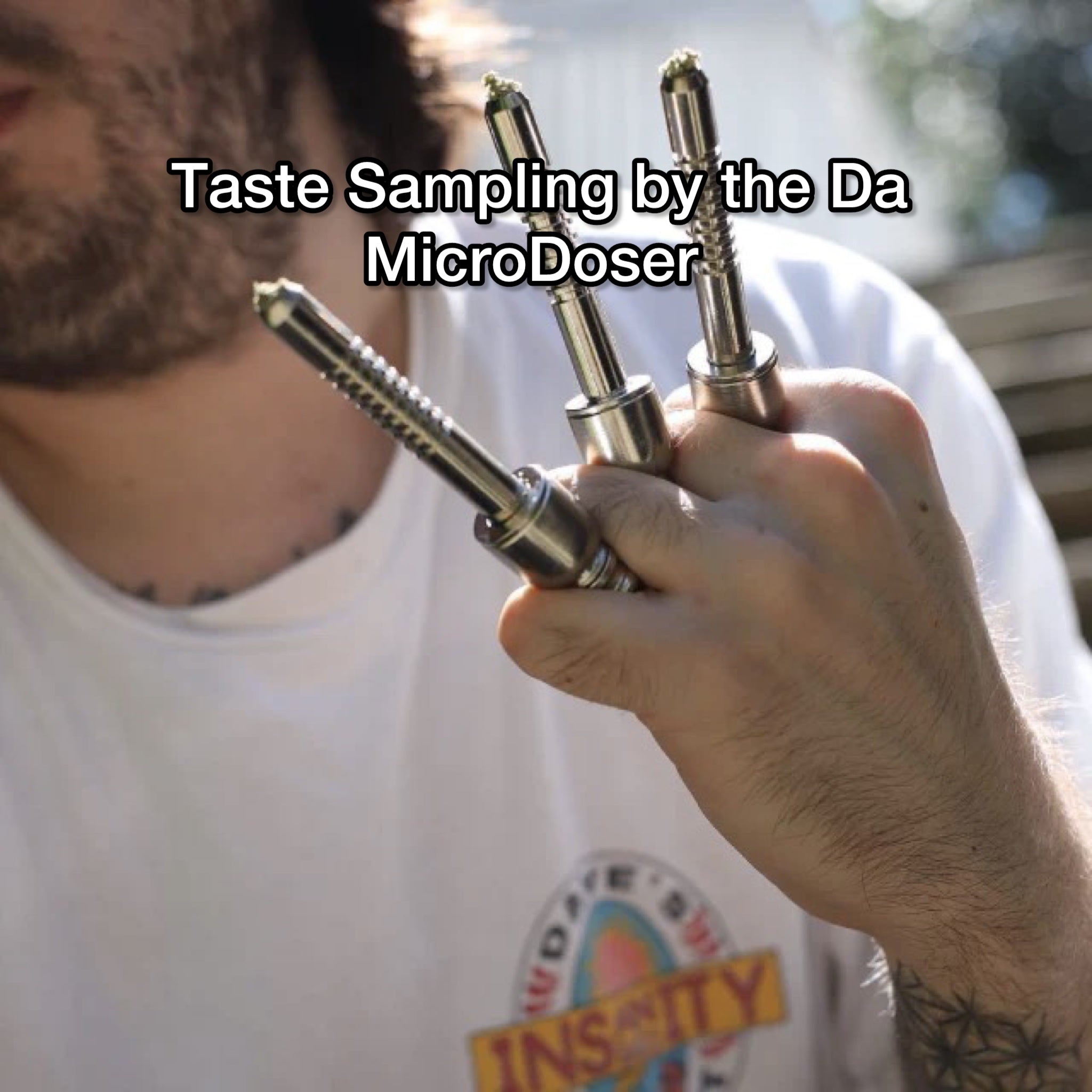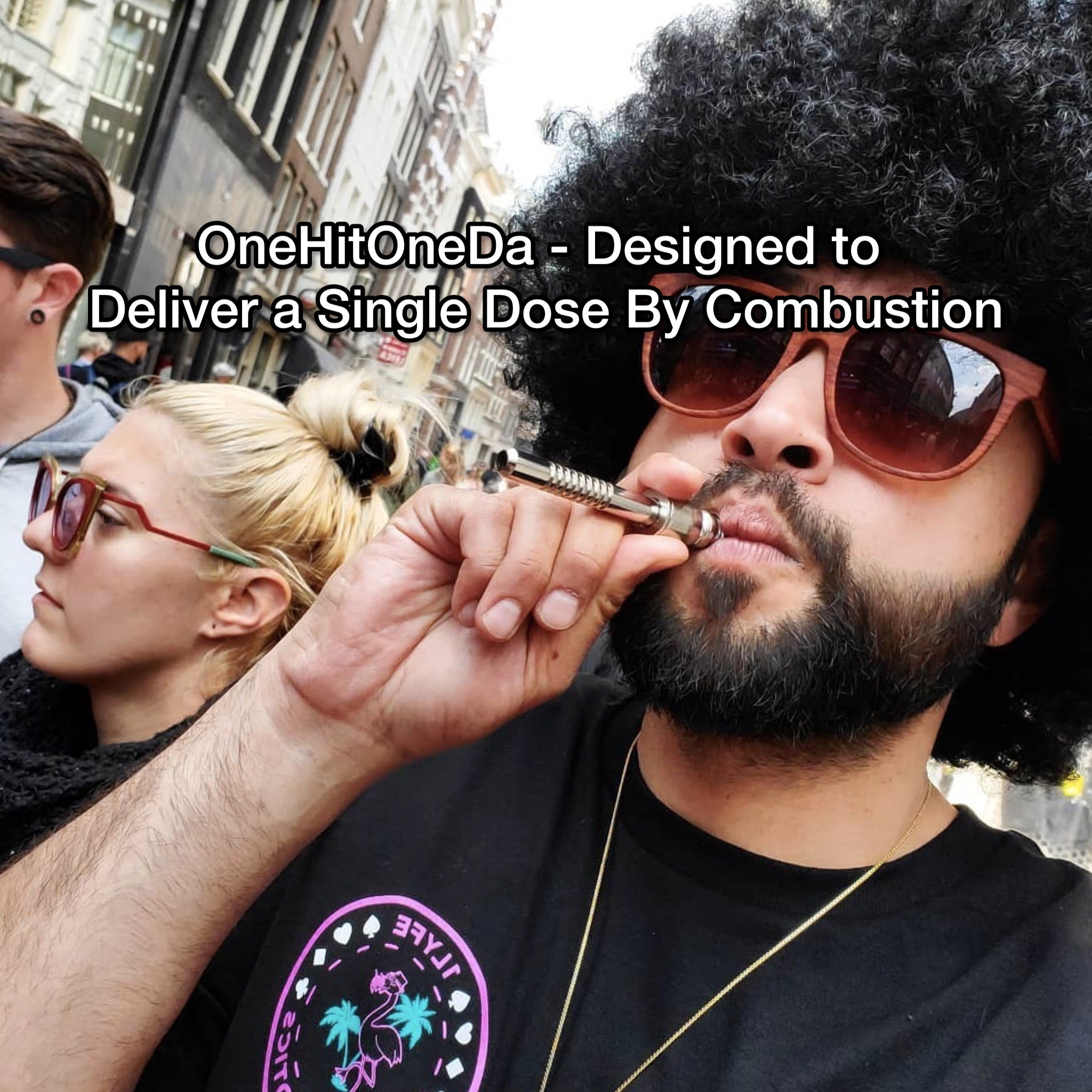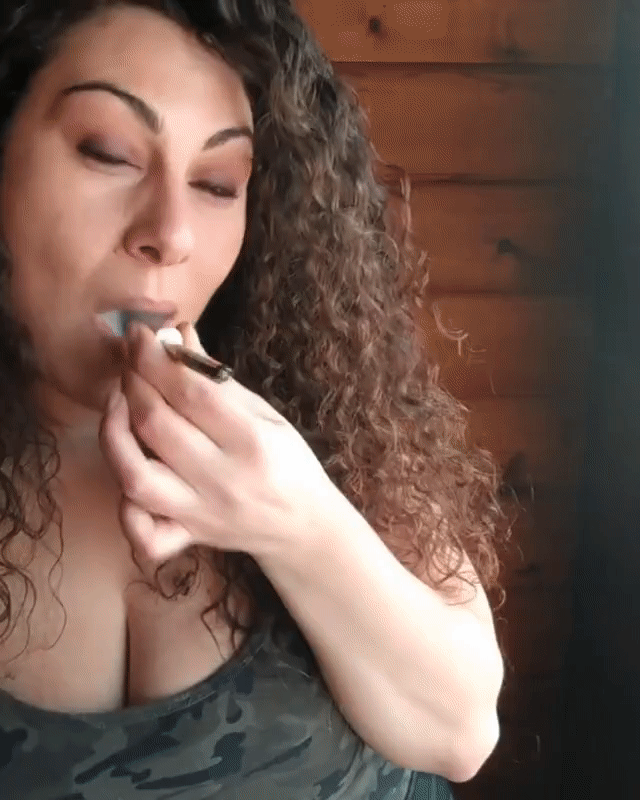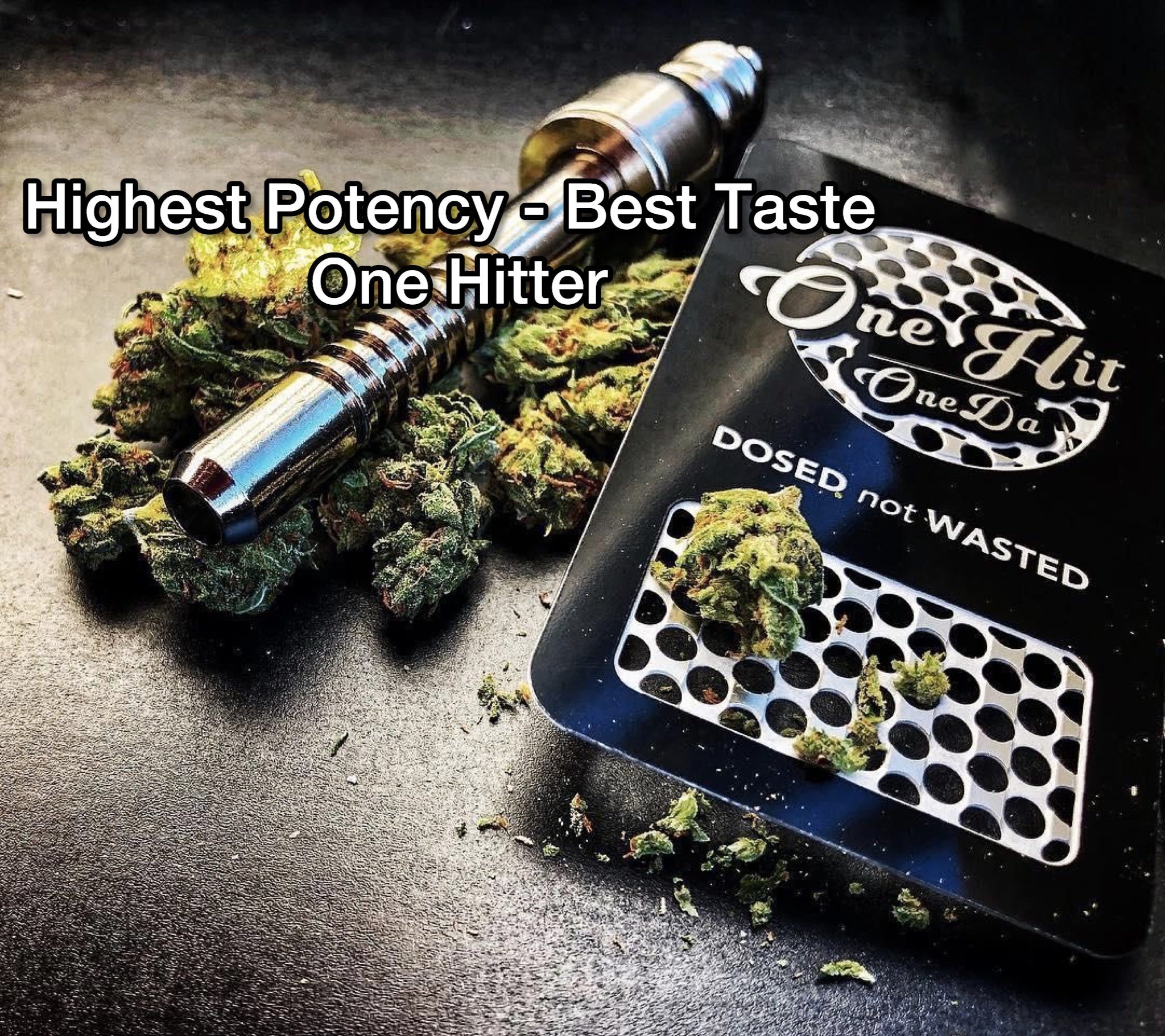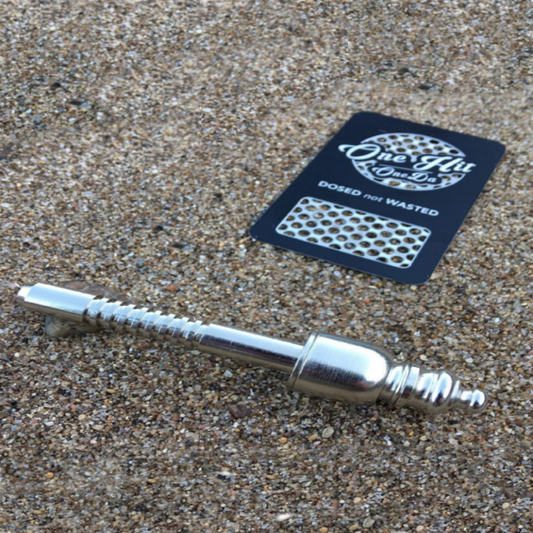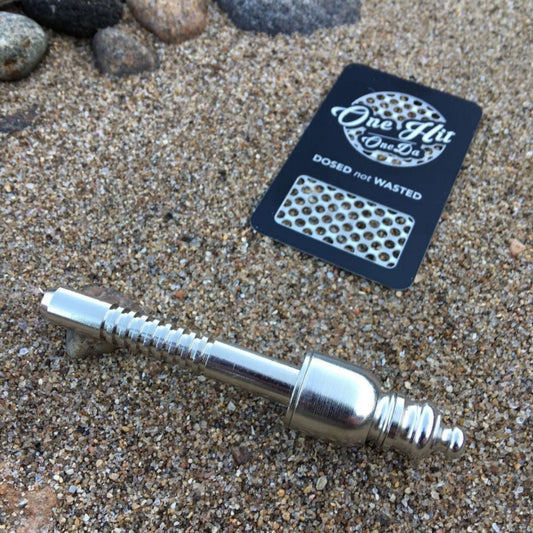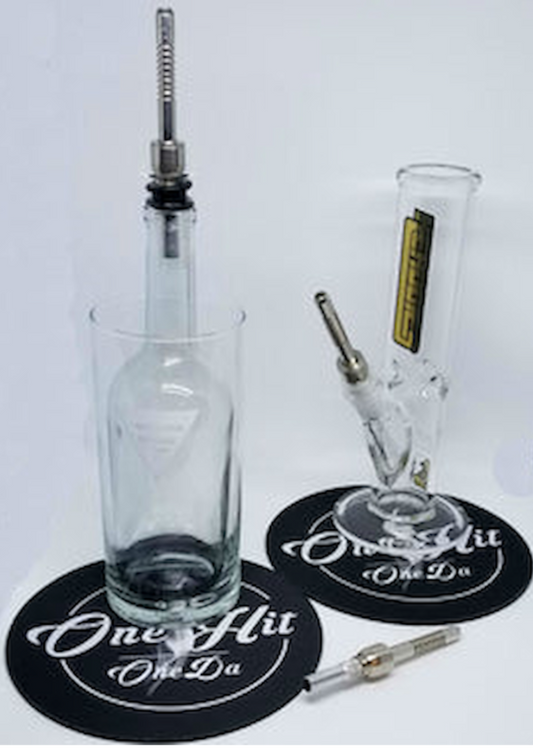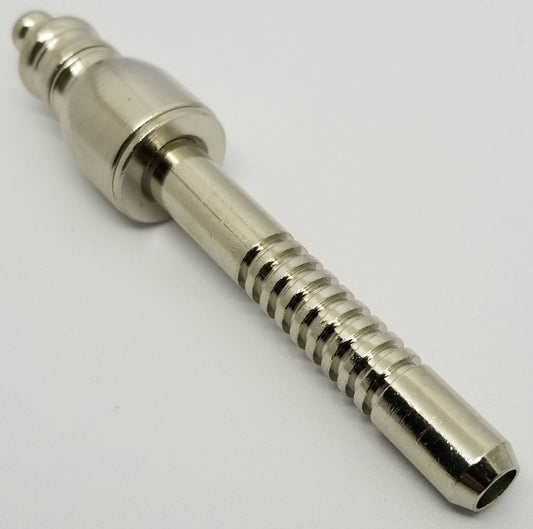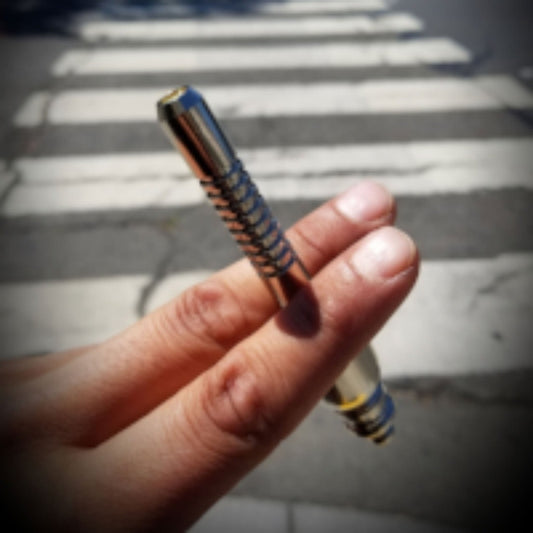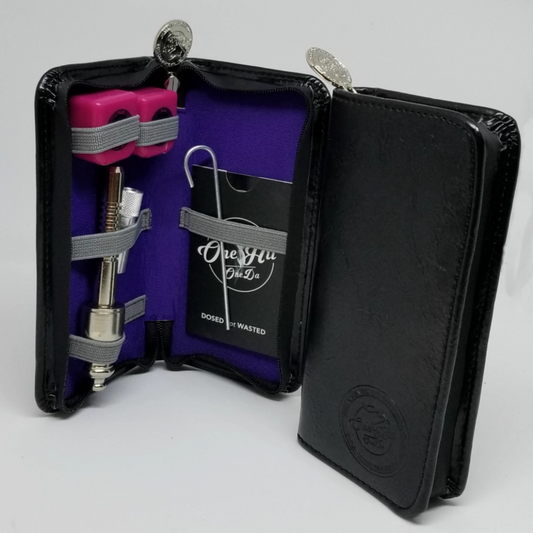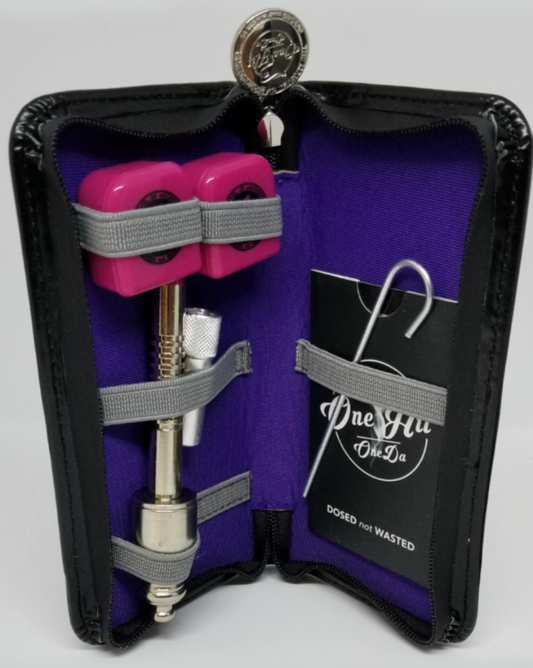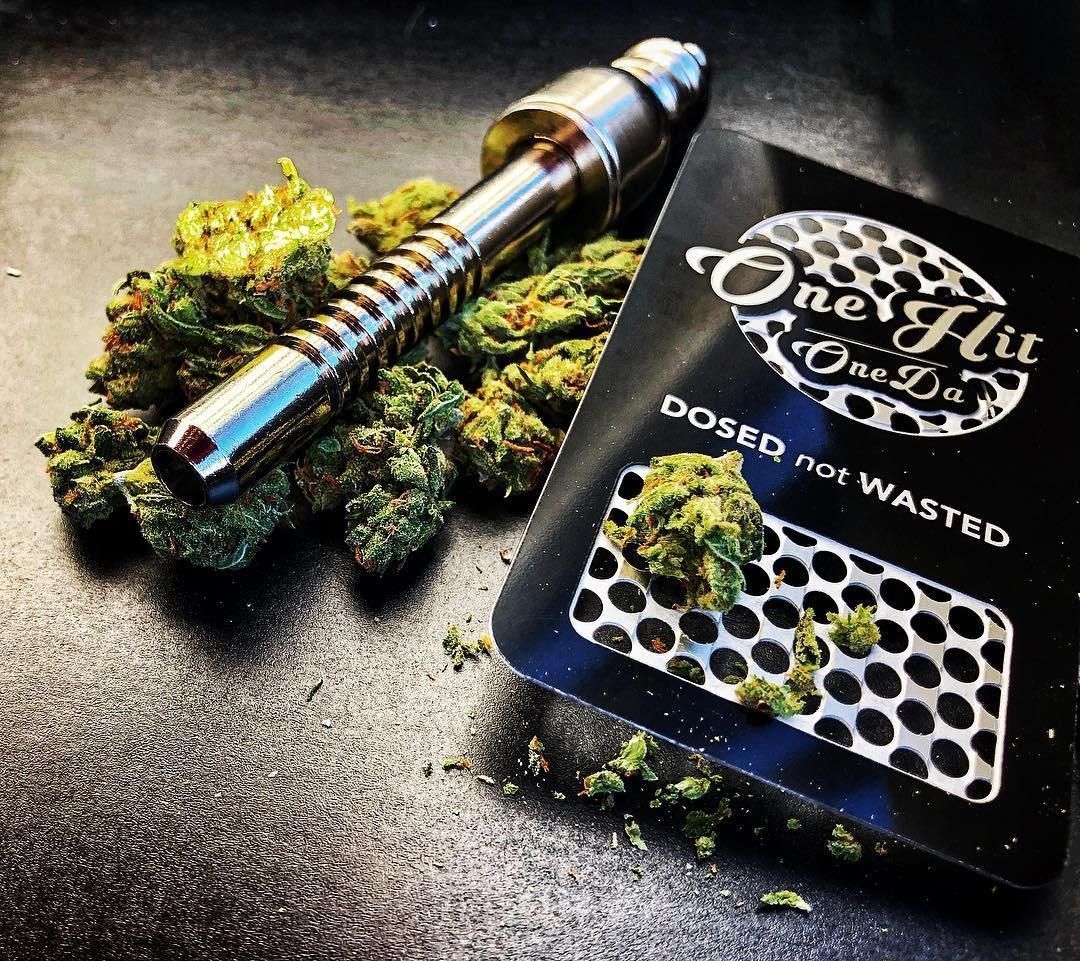
Featured Products
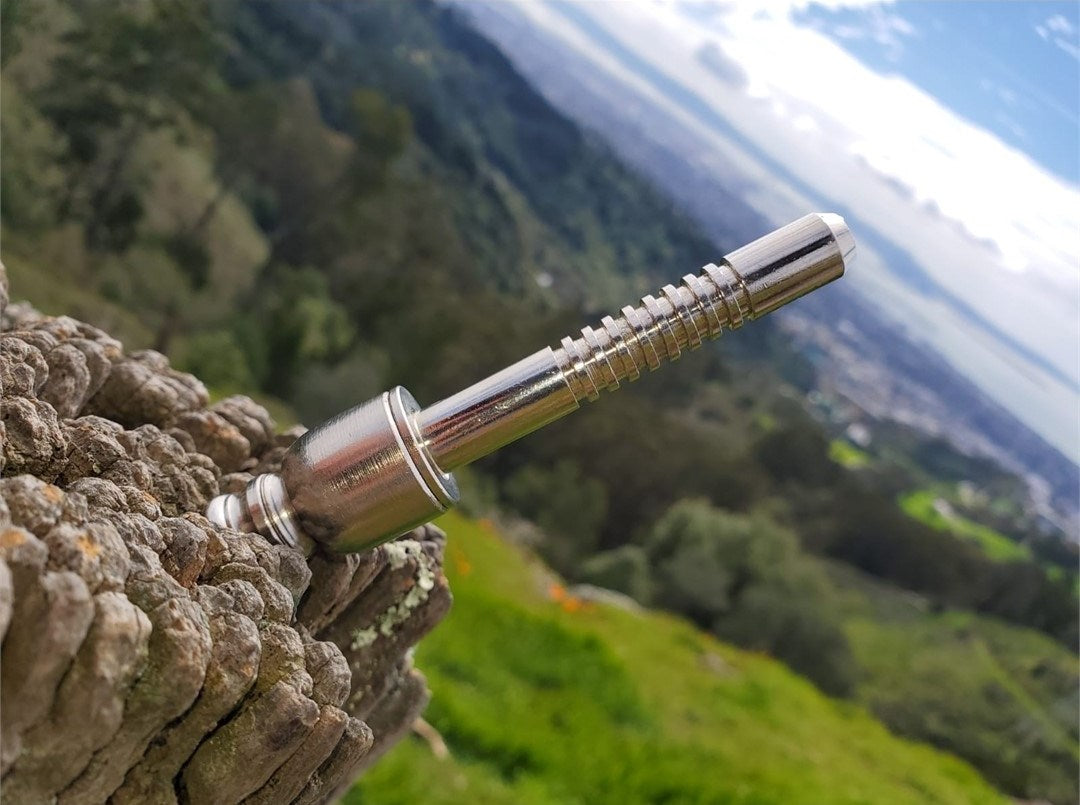
Better Than Da Rest
Engineered for Combustion - Portable - Convenient - Discreet - Easy to Clean
What makes OneHitOneDa Da best microdoser on the market?
-
Engineered for Combustion
Designed to allow optimal airflow and a uniform dose. The unique ash catcher will allow you to inhale without fear of a lungful of hot ash. No more Scooby Snacks!
-
Portable, Convenient, and Discreet
At 4 inches in length, the OneHitOneDa fits in the palm of your hand, so a closed fist conceals this unbreakable pipe. Designed to fit into most water pipe slides in addition to hand use.
-
Easy to Clean
Other One-Hitters are prone to clogging and difficult to keep clean. OneHitOneDa disassembles to keep the pipe bore clean and comes with a cleaning tool.
Meet The OneHitOneDa
Reviews
-

@masterbong247
“Amazing!!! Way less product used and still satisfies. These guys are on to something!”
Master Bong
-
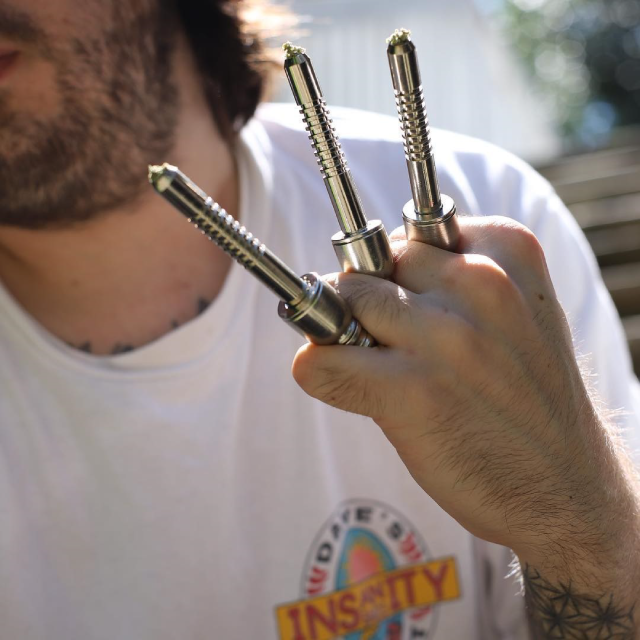
@globbindaddy
"OneHitOneDa is the best one hit pipe he's come across... And we agree!"
GlobbinDaddy
-
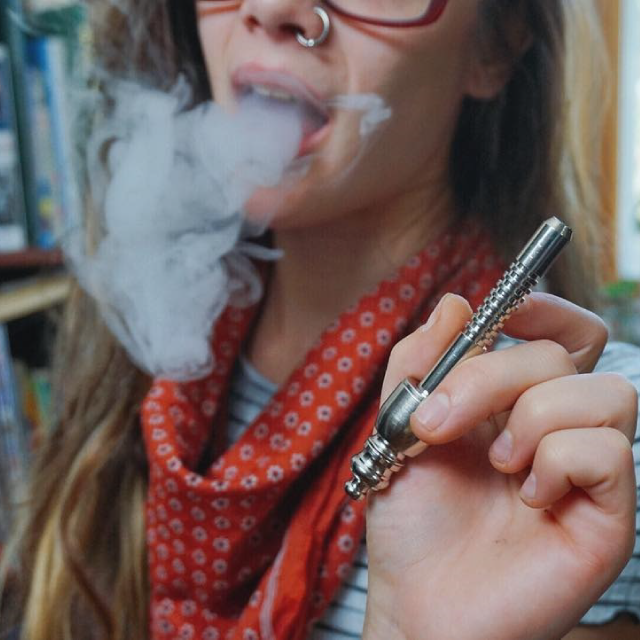
@jennywakeandbake
"OneHitOneDa reinvented the chillum"
JennyWakeAndBake
COMPLETE COMPARISON
Portability and Durability
Does your one hitter fit in your purse or pocket, discretely? Is the material your one hitter is made of too fragile for portability? How heavy is your one hitter when it is being carried?
One Hitter pipes are the smoker’s friend; there when you need a quick smoke, often requiring absolute discretion. But what if the pipe is prone to damage in your pocket, purse or backpack? Is a metal pipe a better portable choice than glass? Some smokers feel the most important aspect of portable is “will this fit into a dugout?” A One Hitter is typically small, less than 4 inches in length, and not so large in diameter that it appears you have a Blazer Torch in your pocket. At 4 inches in length the One Hitter fits across the palm of one’s hand, so a closed fist conceals your pipe. Materials selected for a portable One Hitter should be unbreakable but glass may be preferable when trying to avoid detection. Metal pipes are a problem for venues that restrict the possession or use, and glass will be
undetectable. However, unless the glass is protected in a Dugout, or Pyptek Nano metal outer shell, glass is always fragile and not a sure bet. The weight of a pipe is a matter of personal taste. A heavier pipe feels better to some people inferring solid quality. A lighter pipe for others is preferable as they do not want extra weight in their purse or pocket. Heavier materials like brass or stainless steel will have more overall strength than aluminum or glass. Glass is most prone to unintended damage both in transport and use. With a One Hitter, smoke is not causing heat transfer to the pipe, combustion is. We want combustion of the flower to be thorough so as to leave minimal residue in the pipe. The pipe will get hot when the flame is directly applied to the pipe or when the flower contained in the pipe is burning, transferring heat to the pipe. A One Hitter should not be getting so hot as to create kinetic energy to start moving metal molecules. When a One Hitter gets very hot while smoking, that is an indication that the pipe needs cleaning, like a chimney covered in Creosote, because the residue is burning. One last point on materials, many people mention the “taste” of metal versus glass when smoking. Taste is a personal preference and not easily explained by science. One observation would be how many people eat three square a day with glass utensils? Not an answer just an observation.
Air Flow and Combustion
Do you inhale with full force, full confidence when you use a One Hitter? Does the design of your One Hitter have an impact on combustion? If science defines combustion as requiring air flow, should products designed for combustion feature optimized air flow? To be specific, combustion requires three things be present; something that will burn, a spark, and air. If any of the three are not present there is no combustion. Cannabis burns well in a cigarette or joint form, as well as when consumed in a large open bowl. When the bowl is small and there is less surface area exposed to the air, inhaling pulls the flame towards and into the cannabis during combustion. Grinding the cannabis creates maximum surface edge to ignite when the spark is presented. A coarse grind will leave space for air to flow, supporting combustion whereas a very fine grind will have less space for air flow and will require more effort inhaling, slowly in most cases, but continuously to maintain combustion. The science of combustion works when using a One Hitter and inhaling with continuity. Human behavior is a factor in the efficiency of combustion. When using a One Hitter consumers are reluctant to inhale confidently, and with continuity. This reluctance is easy to understand when consumption with a One Hitter is assessed. A One Hitter is really a tube, a straw for example. If one takes a moistened ball of paper and you exhale HARD through the straw the “spitball” can be painful. Now picture a flaming wad of cannabis and inhale HARD and that “meteor” hits you in the throat, AND THAT HURTS FOR A WHILE. The reader is nodding in agreement. When the smoker fears the hot ash they will not inhale confidently and they will create poor combustion. Low air flow while puffing, and no air flow when not, will leave poorly combusted cannabis to be drawn into the pipe bore, creating clogs and a hot pipe barrel. To remedy this problem with a One Hitter, the BudBat and OneDa have a screen to interrupt the ash before it exits the pipe. No ash equates to no fear, leading to more complete combustion. Yes Mr. President, you want to inhale! Confidently!
Uniformity of Dose Delivered
What defines a “dose” of ground cannabis? Is the capacity of the pipe chamber the definition of the dose delivered by the pipe? How does knowledge of dosing empower the consumer? Wine tasting! Meet your match. Toxicologists have an expression that is the absolute truth; “everything is toxic, it is the dose that matters.” With ground cannabis and combustion consumption it is near universally accepted that you are not able to smoke your way into a cannabis overdose. A smoker will reach a plateau after some number of tokes; inhales, but may continue consuming without any change in affect. Plateau is the only indicator of significance. Pass the plateau and you are no longer necessarily benefitting from the effort. Dose consistency should matter more to a smoker than the actual size of the dose. For demonstration purposes and convenient math, and consistent with early tests with a hand grinder, the examples presented will use 50mg as the size of a dose of ground cannabis. This mass will vary depending upon hand or power grinding which will result in a finer grind, the moisture or resin content of the flower, and the force or effort extended in pressing the One Hitter into the ground flower to load. A one gram joint is 1000 milligrams(mg). That means that there would be 20 doses of 50mg in a one gram joint. With the ability to consume ground cannabis by the dose, with a One Hitter for example, a consumer is able to determine the number of doses that consumer needs to reach plateau. That may be as few as a single dose! Without a consistent delivery system to dose it is difficult if not impossible to consume with mindfulness, an understanding of what one is able to feel or do in combination with that dose of cannabis. The amount of ground cannabis “loaded” into the One Hitter is the available cannabis if totally combusted. What is the mass of cannabis “delivered?” How much was consumed by the smok er and not left as residue in the pipe? If the amount of cannabis residue in the chamber or bore is enough to result in a clogged pipe, it is enough to have weight. A One Hitter results in cannabis residue either clogging the pipe or causing smoker concerns about hot ash. This One Hitter behavior creates dosing inconsistencies. Ash is the result of full combustion so the dose delivered when only ash is present is a more consistent dose then when there is cannabis residue that did not combust. Once a smoker has an understandi ng of a strain and dose while hand smoking, what if the dose is extended to water pipe smoking? Does pipe water volume or the size of the water pipe throat for air or ice impact how the dose affects the smoker’s high? Smokers have an opportunity to experiment with their glass and understand why one piece is preferable over another for a particular strain. Wine tasting on steroids, by the dose. Ease of Cleaning
Turbulence and air flow? Is your One Hitter designed for easy cleaning? What practices should apply cleaning a One Hitter?
Turbulence is not something a smoker would think about when they light up, but in a discussion of One Hitter efficiency and science it is irresponsible not to discuss changes in the science of the One Hitter as a smoker uses the One Hitter over and over again. For the best performance the smoker needs to maintain uniform air flow which will assure full combustion and draw all cannabis through the bore of the pipe. Smokers do not inhale with authority as discussed previously so the bore begins to be coated in partially combusted cannabis from the first use, post cleaning let’s say. Each additional smoke adds to the coating and the result is turbulent air flow through the bore. This makes it more difficult to inhale as the turbulent air does not move smoothly through the bore. When the air flow is reduced to a level of difficult, if not impossible, to draw air through the One Hitter, all semblance of pipe efficiency is gone. Although some smokers would use a cleaning tool to push the residue out of a One Hitter to continue smoking, the effort has long passed “a pleasant smoking experience.” So how easy is too easy for cleaning? Many advisors suggest soaking cannabis pipes in alcohol to clean them. This works but it produces a sticky liquid mess that most people pour down their drains. Please do not do this. The alcohol flows away. The sticky residue coats the bottom of the drain pipes and continues to be sticky. Paper towels strips (small pieces) and Q-tips are combustible in a recycling facility. Dip or spray towels and Q-tips and then manually clean your One Hitter. Sticky residue from smoking is absolute. A pipe that does not disassemble for cleaning is going to be more difficult to clean regularly. Mechanical or moving parts in a smoking environment will get dirty and will need cleaning. The need for cleaning is most likely indicated by a failure of the mechanical system, for example spring loaded residue ejectors. Internal dampers and diffusers will get coated in smoke borne oils and residue and will increase the effort to clean the One Hitter. Last but not least, Performance is directly related to maintenance. Hand or Water Pipe Smoking
Hitter dosing convenience. A standard for all occasions
One Hitter pipes have survived as one of the most ubiquitous items in a smoke shop because of the inherent size, ease of use, and low cost. With only one exception One Hitter pipes are designed for hand smoking. The OneDa by OneHitOneDa is designed to fit into an 18mm and 14mm water pipe slide in addition to hand use. As previously discussed the One Hitter is known for Scooby Snacks or hot ash being inhaled. The ashcatcher on the OneDa stops the ash before it exits the pipe and therefore a smoker inhales with authority and without fear. When the ash stops in the pipe the water pipe water and glass will also stay cleaner longer. When a smoker knows that two doses of OneDa by hand has a desirable effect or high, they are now equipped to start experiencing their water pipe(s). OneDa offers smokers the uniform dose and doser to work with a water pipe as the smoker experiments with the different internal and external configuration offered. A short beaker bong versus a tall beaker bong where the volume of air in the throat is the variable. Is there a noticeable difference in taste or high if the water is hot, or cold? Do diffusers make any difference in high or just difficulty of cleaning? A uniform dose makes all of this experimentation possible. Have fun! Economics
Cost versus value? Replacement?
Cannabis is expensive. Now that we have that out of the way, is the cost of a pipe as important as the cost of using the pipe? Let’s take a look. It is self-evident that a less expensive pipe has a lower cost of entry. A pipe that is durable and not fragile will last longer than a fragile pipe; once again self-evident. When a smoker is standing at a counter looking at prices this is the decision making going on in their head. The marketing of certain pipes will espouse the benefits of internal efforts to swirl and cool the smoke, or make the removal of the ash easier, or offer a built-in grinder or heat sink. Each of these features is worth the added expense if the benefit enhances the smoker’s experience. However, an inherent flaw of all One Hitter pipes, that is only addressed by the BudBat and the OneDa, is that the ash is inhaled with the smoke as discussed previously. This consciously or subconsciously causes a smoker to puff rather than inhale with authority. When the smoker puffs, up to 50% of the dose is left in the pipe non-combusted. In economic terms this takes the cost of cannabis and doubles the cost each dose. At $10 per gram, and 50mg per dose, the smoker will pay for a more efficient One Hitter through the savings of more efficient combustion in short order. The BudBat and OneDa have a barrier, an ashcatcher, that stops the ash and encourages inhaling with confidence and full combustion; full value.
Overall Strength of Solution
By science, are One Hitters efficient as a class of pipes? Do One Hitters offer users consumption control? Will your One Hitter be ready when you are? Is there any one “best” solution?
This summary has been prepared by a very experienced One Hitter smoker. The author does not know how to roll and has lived with a DugOut and bat by their side for almost forty years. An engineer, a builder, a treatment plant operator and a cannabis entrepreneur, the author is qualified to evaluate and specify the appropriate tool or material for an application. Evaluating the class of products known as One Hitters needs to start with combustion efficiency. With the exception of the OneDa, which was designed to stop the hot ash to promote full combustion, One Hitters fail to deliver combustion efficacy because of the user’s behavior. During eye examinations a machine is used to blow a burst of air at your eyes. It is uncomfortable waiting for a burst of air, which does nothing. It is behavior modifying to anticipate a hot meteor blasting towards your throat. So the users puff and that is not the best behavior for combustion. One Hitters clog. True. Once again though, this is characteristic of all but the OneDa. The difference is once again the way the smoker inhales. The OneDa promotes full confidence with an effort towards maintaining the flame or burn and intentionally inhaling the ash through the pipe and into the ashcatcher. This is what should be achieved with all One Hitter pipes but nobody wants to intentionally inflict pain on themselves we hope. When disassembled for cleaning the OneDa pipe bore is clear and the blockage is in the ashcatcher; for arguments sake the user’s alternative throat. Glass and/or glass components in a One Hitter make the pipe less dependable because glass is fragile. Less turbulence is preferred for air flow and combustion and the resulting smoke will feel hot because it is smoke from a caustic burn. Sealed glass is not easy to clean without soaking in alcohol or cleaner. Metal pipes disassemble and are durable. Aluminum is less durable than harder metals such as brass or stainless steel. At low heats no metal is a health concern as the metal molecules will not get hot enough to kinetically move. In all categories, based upon science, the OneDa is the best performing One Hitter available. The author welcomes alternative science and conclusions as this is the ultimate goal of the design of efficient tools.
